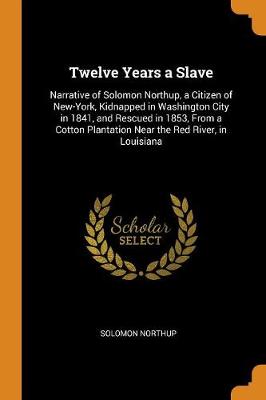Slave Narratives - Solomon Northup
1 total work
Solomon Northup was a free man, the son of an emancipated Negro Slave. Until the spring of 1841 he lived a simple, uneventful life with his wife and three children in Upstate New York. Then, suddenly, he fell victim to a series of bizarre events that make this one of the most amazing autobiographies ever written.
Northup accepted an offer from two strangers in Saratoga, New York, to catch up with their traveling circus and play in its band. But when the chase ended, Northup had been drugged, beaten, and sold to a slave trader in Washington, D.C. Subsequently, he was shipped to New Orleans, where he was purchased by a planter in the Red River region of Louisiana. For the next twelve years Northup lived as a chattel slave under several masters. He might well have died a slave, except for another set of bizarre circumstances which enabled him to get word to his family and finally regain his freedom.
These elements alone -- the kidnapping, enslavement, and rescue -- are sufficient for a sensational story. But Northup provides more. He was a shrewd observer of people and events. His memory was remarkable. He described cultivation of cotton and sugar in the Deep South. He detailed the daily routine and general life of the Negro slave. Indeed, he vividly portrayed the world of slavery -- from the underside.
Originally published in 1853, Northup's autobiography is regarded as one of the best accounts of American Negro slavery ever written by a slave. It is reprinted in full here for the first time, as the initial volume in The Library of Southern civilisation.
Northup's account has been carefully checked by the editors and has been found to be remarkably accurate. To his own narrative of a long and tragic adventure, Professors Eakin and Logsdon have added significant new details about Northup and the plantation country where he spent most of his time as a slave. Heretofore unknown information about the capture and trial of Northup's kidnappers has been included, adding still another fascinating episode to an already astounding story.
Northup accepted an offer from two strangers in Saratoga, New York, to catch up with their traveling circus and play in its band. But when the chase ended, Northup had been drugged, beaten, and sold to a slave trader in Washington, D.C. Subsequently, he was shipped to New Orleans, where he was purchased by a planter in the Red River region of Louisiana. For the next twelve years Northup lived as a chattel slave under several masters. He might well have died a slave, except for another set of bizarre circumstances which enabled him to get word to his family and finally regain his freedom.
These elements alone -- the kidnapping, enslavement, and rescue -- are sufficient for a sensational story. But Northup provides more. He was a shrewd observer of people and events. His memory was remarkable. He described cultivation of cotton and sugar in the Deep South. He detailed the daily routine and general life of the Negro slave. Indeed, he vividly portrayed the world of slavery -- from the underside.
Originally published in 1853, Northup's autobiography is regarded as one of the best accounts of American Negro slavery ever written by a slave. It is reprinted in full here for the first time, as the initial volume in The Library of Southern civilisation.
Northup's account has been carefully checked by the editors and has been found to be remarkably accurate. To his own narrative of a long and tragic adventure, Professors Eakin and Logsdon have added significant new details about Northup and the plantation country where he spent most of his time as a slave. Heretofore unknown information about the capture and trial of Northup's kidnappers has been included, adding still another fascinating episode to an already astounding story.
